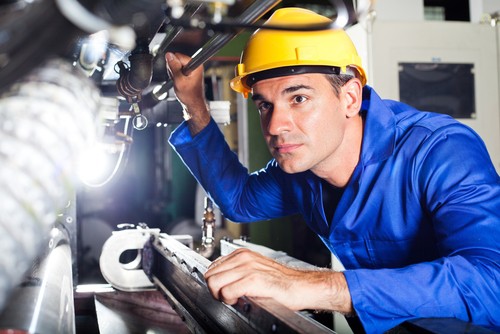Editor’s Note: This content was last updated 4/1/24.
Industrial equipment can be as small as a trash can or as large as dump truck. And when it comes to installing this equipment into a facility, a lot hinges on the size and overall design of the equipment.
If equipment is too large, valuable space could be wasted with oversized parts. Additionally, if it’s too small, certain equipment can fail or cause errors because it’s trying to do too much.
Functionality is the ultimate purpose for all industrial equipment – if equipment cannot function properly, productivity, efficiency and safety are all at risk. The placement of equipment is also essential because each location in a facility creates different nuances.
For example, in a food processing plant, the last thing a facility manager would want is to have the final packaging zone near the processing station. Airborne contaminants and other microorganisms could end up on finalized products before they go out for shipment.
Layout is critical in nearly all processing facilities. And if the equipment is not designed correctly, facility managers could have more problems on their hands with maintenance, throughput and safety issues.
Understanding the physical properties and clearances of fixed equipment
In any design or redesign process within a facility, plant operators have to consider the physical properties and clearances of fixed equipment. For example, certain areas of the plant have to be dedicated to fixed equipment, or machines that will not move in their lifespan at the facility.
For shell and tube heat exchangers, plant operators should know where to best place this equipment for functionality and safety reasons. This fixed equipment is often connected to the building or to a permanent connection to the building’s heating system. Enough clearance must be provided for inspecting and cleaning tubes and replacing gaskets or bundles.
With this type of equipment, modifications to the facility and its systems are required when moving the machinery to a new location.
Designed for sanitation
Another important factor in equipment design is how it’s built to handle sanitation. One of the most common bacterium found in cold or wet places within a processing facility is Listeria. The bacterium grows from damp areas in the building or within the equipment over time. And once these microorganisms enter the equipment, if they are not cleaned, they will last through the production process.
Listeria is a dangerous and sometimes fatal bacteria that can affect pharmaceutical or food manufacturing. Products such as meat, cheese, dairy, nuts and other protein products are highly susceptible to Listeria in the food processing industry.
Since contaminated products can be dangerous for consumption, shell and tube heat exchangers, which can kill bacteria and make the products edible, need to go through thorough cleanings to ensure safety. The design of a shell and tube heat exchanger can mean all the difference for a facility operator depending on what product they are giving heat treatment to.
Additionally, for shell and tube heat exchangers, the equipment has to be able to handle multiple cleanings. Since these cleanings use highly acidic solutions, most new heat exchangers are built out of stainless steel to limit bacteria growth and handle more powerful cleanings. With cleaner equipment, facilities can reduce downtime and increase overall efficiency.
Battling airflow problems
It’s not uncommon for older or out-of-date equipment to experience airflow problems. Equipment design can make the difference between clean equipment and machinery that harbors bacteria, allowing it to survive, reproduce and grow.
With a more open design to industrial equipment, airflow can limit the growth of bacteria. Additionally, a more open airflow design allows for better cleaning processes.
It’s also important to know that cleaner equipment helps prevent recalls where items have been found with bacteria. While most people only think this affects food and dairy industries, chemical, pharmaceutical and gas processing facilities can also have their products affected by bacteria growth in the equipment.
Working with a trusted partner
In all, the equipment design plays a critical role to how sanitary and safe the facility and the products are in the plant. Working with a trusted shell and tube heat exchanger provider can help facilities with their equipment design and facility layout to improve efficiency.
More from the Enerquip Blog
- 7 Ways Shell & Tube Heat Exchangers Outperform Plate & Frame
- The Art and Science of Film Temperature to Achieve Goldilocks Efficiency
- Decoding the Delicate Balance of Sizing Shell and Tube Heat Exchangers
- Machined vs. Fabricated Channels
- Understanding Finish Requirements for Shell and Tube Heat Exchangers

